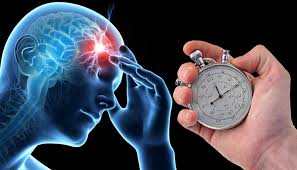Did you know that one in six people will have a stroke in their lifetime? Strokes are the leading cause of disability, and they can be incredibly disabling. If you or someone you love has suffered a stroke, you know how important it is to get rehabilitation as soon as possible. In this blog post, we will discuss STREAM: a new approach to stroke rehabilitation that is gaining popularity among healthcare professionals.
Contents
- 1 What Is Stroke Rehabilitation Assessment of Movement (STREAM)?
- 2 Why Was STREAM Assessment Developed?
- 3 How Is STREAM Assessment Used?
- 4 How Does STREAM Work?
- 5 How Do You Score A stream?
- 6 What Is The Purpose Of STREAM?
- 7 What Is The Most Commonly Used In Stroke Rehabilitation Settings?
- 8 What Are The Benefits Of Using STREAM?
- 9 Limitations
- 10 Conclusion
What Is Stroke Rehabilitation Assessment of Movement (STREAM)?

STREAM assessment is a new way to measure how well someone is recovering the ability to move voluntarily and with basic mobility following a stroke.
Stroke Rehabilitation Assessment of Movement (STREAM) is a new measure of stroke rehabilitation that was developed to address the limitations of current assessment tools. STREAM is a performance-based measure that assesses an individual’s ability to perform functional tasks related to daily living. It is composed of four subscales:
1. Motor function
2. Functional reach
3. Gait speed
4. Balance
STREAM assessment is unique in that it is the first stroke rehabilitation measure to incorporate all four of these subscales into one assessment tool. This allows for a more comprehensive evaluation of an individual’s functional abilities following a stroke.
Why Was STREAM Assessment Developed?
STREAM was developed to address the limitations of current stroke rehabilitation assessment tools. Current assessment tools often focus on a single aspect of function, such as motor function or gait speed. However, stroke affects multiple domains of function, and it is important to assess all domains in order to accurately evaluate an individual’s functional abilities. STREAM was designed to fill this gap in the assessment of stroke rehabilitation.
How Is STREAM Assessment Used?

It can be used:
- To evaluate a patient’s physical status, movement quality, and ability to complete basic activities
- As an effective way of measuring the impact of interventions on patient mobility.
- To track changes in the intensity of therapy needed over time
- To provide objective data for clinical decision-making about treatment strategies
- To help determine the need for assistive aids and ongoing support services
- To assess whether a patient is able to safely and independently perform activities of daily living.
STREAM assessment can be used by therapists, doctors, and other healthcare professionals to provide valuable information about a patient’s progress in rehabilitation from stroke. It helps to identify areas of improvement or decline, which can then be addressed with the appropriate treatment strategies. The assessment also provides an objective evaluation of a patient’s functional ability and level of independence, making it easier to determine whether they are ready for discharge or require more intensive therapy.
The results of the STREAM assessment can be used to create individualized treatment plans that take into account the unique needs of each patient. This allows for more targeted interventions, better outcomes, and improved quality of life.
How Does STREAM Work?
The STREAM assessment works by:
Gather baseline measurements
A physical therapist will assess the patient’s current mobility and strength levels by performing a series of tests that measure things such as range of motion, muscle tone, joint flexibility, and balance.
Assess progress
During each subsequent visit to the physical therapist’s office, the same tests that were performed during the initial visit are repeated. This allows for a direct comparison of how well the patient is progressing in terms of mobility and strength.
Adjust treatments
If there is an insufficient gain in movement or strength over multiple visits, the physical therapist can adjust their treatment plan to make sure the patient continues to progress towards their goals.
Measure outcomes
The physical therapist will use the STREAM assessment to measure the patient’s progress over time and make sure that their treatments are having the desired effect.
The STREAM assessment is an important tool for stroke rehabilitation as it allows physical therapists to accurately monitor a patient’s progress and adjust treatments accordingly in order to maximize the effectiveness of their rehabilitation plan. The assessment also helps physical therapists set realistic patient goals and track outcomes for research purposes.
By using the STREAM assessment, physical therapists can ensure that their patients receive the best possible care in order to achieve optimal results from stroke rehabilitation.
How Do You Score A stream?
To Score a stream, you will need to assess the patient’s physical abilities and assign a score based on the following criteria:
- Mobility: How much assistance does the patient require to move around during everyday activities?
- Range of Motion: Does the patient have a full range of motion for each joint or is there any limitation in their movement?
- Motor Control: Does the patient have control over their movements and can they move in a coordinated manner?
- Muscle Strength: How strong is the patient’s muscle strength including fine motor skills such as finger dexterity?
- Cognitive Ability: Does the patient have difficulty understanding instructions or making decisions?
Once all these criteria have been assessed, a score out of five is given for each section: 0 – no movement, 1 – minimal movement, 2 – normal range of motion, 3 – good strength and control, 4 – excellent performance. The total score is then calculated by adding up the individual scores from each category. A higher score indicates a better level of functioning and improved rehabilitation outcomes.
What Is The Purpose Of STREAM?
The purpose of the stream is as follows:
1) To provide an objective measure of motor function after a stroke.
2) To identify the potential for recovery and assess progress over time.
3) To provide guidance in guiding medical treatment decisions, rehabilitation strategies and goals.
4) To allow clinicians to develop interdisciplinary approaches to interventions through evidence-based practice.
What Is The Most Commonly Used In Stroke Rehabilitation Settings?
The Barthel Index (BI) is the most widely used functional measure of rehabilitation progress for stroke patients across many different settings, and the second most commonly used functional outcome measure in all trials related to strokes. There are many scales that go by the name “Barthel Index”. In addition, the BI has been used to evaluate the efficacy of different types of therapies and rehabilitation interventions. The modified Barthel Index (mBI) is the most commonly used version of the BI.
What Are The Benefits Of Using STREAM?
The benefits of using STREAM are as follows:
Assess movement
STREAM can help identify movement impairments early on so that rehabilitation can be tailored to the individual. For instance, if someone has difficulty moving their arm, STREAM can help assess which muscles are weak and need to be targeted in therapy.
Reduce the length of stay
STREAM may help reduce the length of stay in the hospital by identifying those who are responding well to therapy and can be discharged earlier. For instance, a patient who is not improving after 10 days of therapy may be discharged sooner if their rehabilitation plan is adjusted based on information gathered from STREAM.
Improve functional outcomes
There is evidence that STREAM can improve functional outcomes such as activities of daily living and participation in society.
STREAM is a new approach to stroke rehabilitation that shows promise in helping patients recover from their stroke. If you or a loved one has suffered from a stroke, ask your doctor if STREAM could be right for you. For instance, a patient who is not improving after 10 days of therapy may be discharged sooner if their rehabilitation plan is adjusted based on information gathered from STREAM.
Limitations
There are various limitations:
- The test is limited to people who can perform the tasks required.
- The clinician administering the test must be experienced in its use.
- The test may not be able to identify all impairments after a stroke.
Pilot studies have shown that STREAM is a feasible and valid assessment for stroke survivors. However, more research is needed to determine its long-term utility.
Conclusion
It may be concluded that the Stroke Rehabilitation Assessment of Movement (STREAM) assessment is a new approach to stroke rehabilitation that seems to be feasible and effective. The results of this study showed that STREAM was associated with improvements in motor function, disability, and quality of life measures. In addition, the study found that STREAM was associated with a reduction in the number of hospitalizations. This suggests that STREAM may be a promising new approach to stroke rehabilitation. Therefore, further research is warranted to investigate the efficacy of this novel approach.
Further research is needed to confirm the findings of this study and to determine the long-term effects of STREAM. In addition, future studies should compare STREAM to other rehabilitation approaches. Nonetheless, the results of this study suggest that STREAM may be a promising new option for stroke rehabilitation.
Physical Therapy help patients recover from pain. If you’re experiencing Back pain, Shoulder pain, Knee pain, Neck pain, Elbow pain, Hip pain, or Arthritis pain, a physical therapist at MantraCare can help: Book a physiotherapy session.


